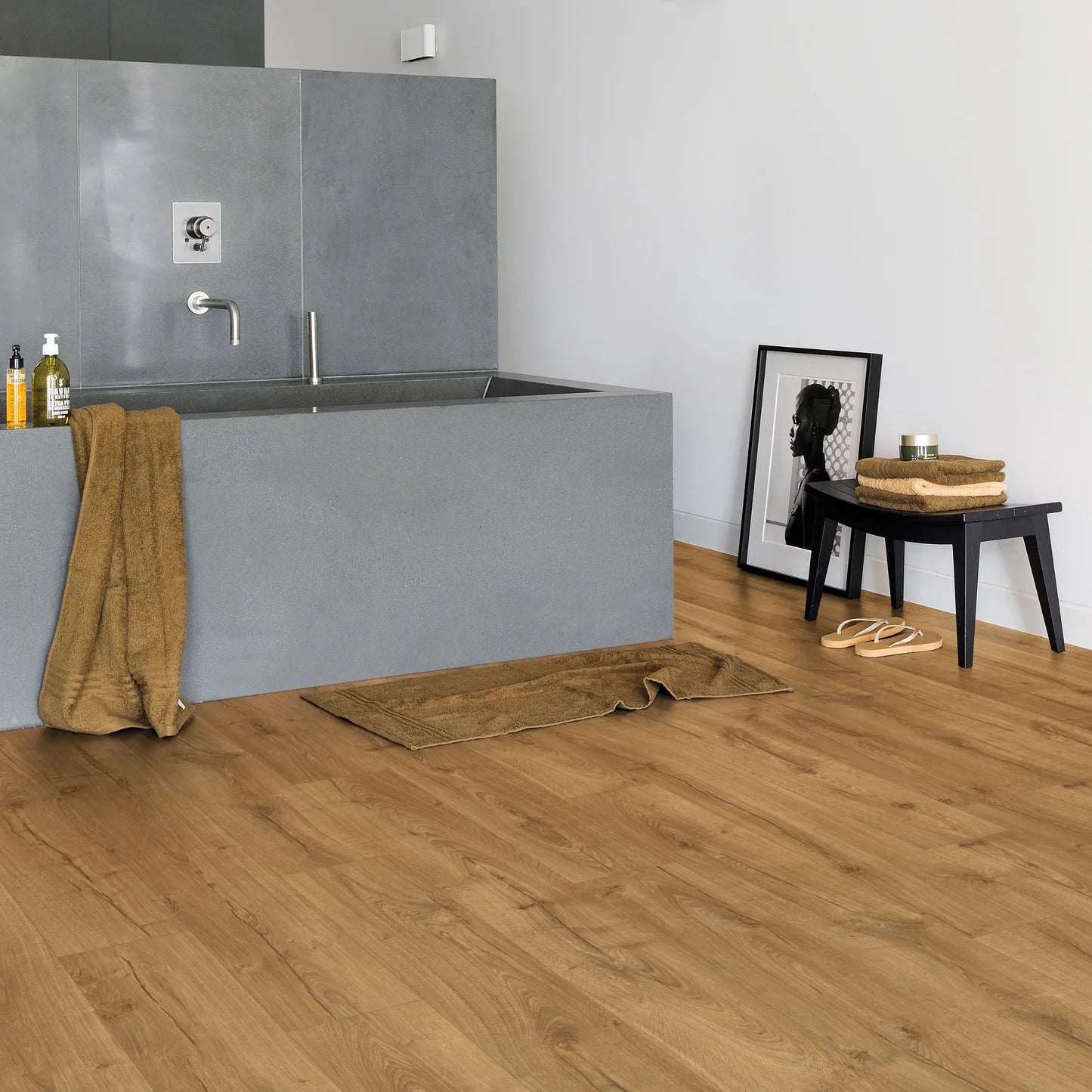
Author, Written by: P. Hirani (Wood flooring Expert)
Underfloor heating has become an increasingly popular choice for UK homeowners looking to improve comfort and energy efficiency. Whether you're building a new home or upgrading your heating system, choosing the right flooring to pair with underfloor heating is essential for performance and long term comfort.
Not all flooring materials are equally compatible with radiant heat, so in this guide, we’ll explore the best options for underfloor heating systems and what to consider when selecting flooring for your home.
Why Flooring Choice Matters With Underfloor Heating
The effectiveness of an underfloor heating system largely depends on the thermal conductivity of the flooring material. In simple terms, the better the material conducts heat, the more efficiently your home will warm up.
Good flooring should:
-
Transfer heat efficiently
-
Retain warmth without overheating
-
Be stable under temperature changes
-
Not trap or block radiant heat
Choosing the wrong type of flooring can lead to poor heating performance, wasted energy, or even damage to the floor itself.
Top Flooring Options for Underfloor Heating
1. Luxury Vinyl Tiles (LVT)
Luxury Vinyl Tiles are one of the best flooring options for underfloor heating due to their slim profile and excellent thermal conductivity. Most modern LVT/Vinyl products are designed with underfloor heating in mind.
Pros:
-
Quick to warm up
-
Stable and resistant to temperature changes
-
Comfortable underfoot
-
Easy to install and maintain
-
Waterproof, ideal for kitchens and bathrooms
Good for: Most rooms including open plan spaces, kitchens, and bathrooms.
2. Engineered Wood Flooring
Engineered wood is a popular choice for those who want the beauty of natural timber with compatibility for radiant heating. Unlike solid wood, engineered boards are constructed in layers, making them more dimensionally stable.
Pros:
-
Natural wood appearance
-
Better heat resistance than solid wood
-
Can be used with low temperature systems
-
Wide range of finishes and formats
Things to check: Always confirm the maximum surface temperature and choose products that specify compatibility with underfloor heating.
Good for: Living rooms, bedrooms, dining areas.
3. Laminate Flooring
Laminate flooring works well with underfloor heating if the product is approved for this use. Its layered structure allows good heat transfer while offering a variety of wood and stone look designs.
Pros:
-
Affordable and durable
-
Good heat conductivity
-
Easy to clean
-
Scratch resistant
Things to check: Some low quality laminates may warp under heat. Choose products marked as suitable for underfloor heating.
Good for: Hallways, bedrooms, living spaces.
4. Porcelain and Ceramic Tiles
Tiles have the highest thermal conductivity of any flooring material, which means they heat up quickly and hold warmth effectively. This makes them ideal for homes where heating performance is a priority.
Pros:
-
Excellent heat transfer
-
Durable and long lasting
-
Ideal for bathrooms and kitchens
-
Suitable for wet underfloor heating systems
Cons:
-
Can feel cold when the heating is off
-
Hard underfoot
Good for: Kitchens, bathrooms, conservatories.
Flooring Types to Approach with Caution
-
Solid Wood Flooring: Natural timber can expand and contract significantly with temperature changes. It can be used with caution, but only when installed properly with professional advice.
-
Thick Carpeting: Carpet acts as insulation, which reduces the efficiency of heat transfer. If you prefer carpet, use low tog underlay and carpet rated for underfloor systems.
Additional Tips for Success
-
Always follow the flooring manufacturer’s guidelines for installation over underfloor heating
-
Allow the system to run at a moderate temperature (typically not exceeding 27°C at the floor surface)
-
Use underlays designed for use with heated floors
-
Acclimate your flooring before installation to avoid issues with expansion
Finding The Right Match For Your Home
The ideal flooring for underfloor heating depends on your lifestyle, room function, and aesthetic preferences. Whether you want the softness of LVT/Vinyl, the charm of engineered wood, or the clean look of tiles, there’s a compatible option to suit every interior.
Explore our full range of underfloor heating approved flooring products, or contact our team for tailored recommendations based on your system and room layout.
About Author:
Peter H. is a flooring product expert who knows all about different types of flooring materials. He shares his knowledge in blogs to help readers make the best choices for their spaces.
